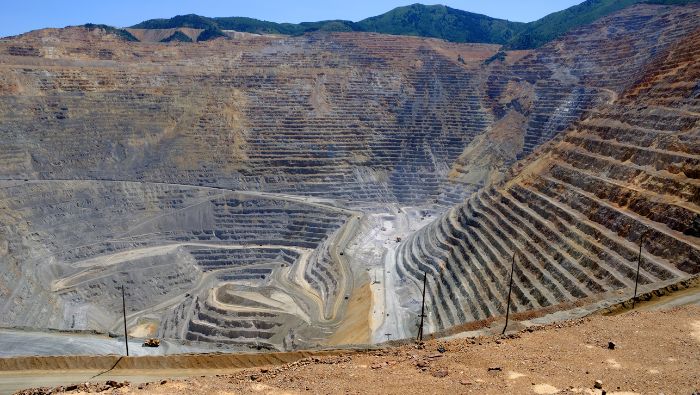
Although Africa accounts for only 6% of the world's copper ore production, it stood as the third largest producing region in 2023, with 16% of the world’s mined copper units. This is primarily due to the high-grade nature of the central African Copperbelt – the source of over 90% of Africa's copper.
Africa's total copper output reached 3.6 million metric tons in 2023, reflecting an 8% year-on-year (y/y) increase and contributing to 16% of world copper supply. This growth is predominantly driven by the rapid expansion of projects within the DRC, which has increased its global prominence by 1 Mt, nearly doubling its output over the past five years. This surge is attributed to key projects such as Kamoa-Kakula, Sicomines, and Metalkol. The outlook for the DRC is of continued increase, most notably due to expansions at both Kamoa-Kakula and Tenke Fungurume.
Another country with a deep history of production from the Central African Copperbelt is Zambia. Despite production decreases in the last three years, the country produced just under 800 kt of copper in 2023. With the recent approval of the S3 expansion at Kansanshi and the fast-tracking of a Lumwana expansion scenario, coupled with the re-gain of control over Konkola Copper Mines by Vedanta, Zambia is poised to transition into a phase of copper growth over the medium term.

Data from CRU Base metals cost and emission services
From a cost perspective, African copper mining compares favourably to other regions. In terms of both site costs and value-adjusted cash costs, including royalties (VACC), Africa falls just above the world average – with site costs at $4,731/t and a VACC of $3,067/t. Currently, this positions Africa as the third-lowest region in terms of site costs, behind Central and South America, and Asia (excluding China). In contrast, 14 years ago, Africa had the highest site costs among all global regions.

Data from CRU Base metals cost and emission services
Although, on average, African copper assets have a favorable VACC, a closer examination of individual assets unveils a nuanced distribution. The largest producing assets, with notably low VACC (hovering around the second quartile), are situated in the DRC. These specific assets benefit from favorable by-products, such as cobalt, which despite cobalt’s diminishing fortunes, significantly reduces overall costs.
In contrast, Zambia is currently the highest-cost major producing country, as the copper deposits from this region mostly lack substantial by-products, aside from relatively minor gold and silver. As a result, the majority of these assets are positioned higher on the VACC cost curve, with many clustered between the 75th and 90th percentile.

Despite VACC costs being considerably lower in the DRC, this is not only due to the by-product revenue of cobalt, but is also assisted substantially by overall lower unit site costs compared to Zambia.
The difference in site costs can be mostly attributed to the significant grade difference between the two regions. The DRC is the highest-grade copper producing country globally, with a weighted average head grade of 3.4%, compared to Zambia’s 1.1%. In simplified terms, a ‘typical’ Zambian mine must process three times more ore than its northern neighbour to produce one unit of copper. Despite this, Zambia’s average head grade is still favourable compared to the world average of 0.58% and thus still contains competitive site costs compared to other countries.

African copper assets have on average maintained a strong VACC (cash) margin over time. Despite relatively high site costs in the late 2000s, VACC remained competitive, primarily driven by the DRC’s cobalt by-product revenues.
However, with copper forecast to surpass $12,000 per ton by 2028, by-product revenues will start to contribute to a lesser degree to the overall cash margin. Moreover, with site costs and VACC expected to rise in Africa, the forecast increase in copper price will exceed that of site cost and VACC escalation, leading to widening margins.
Africa and more specifically, the DRC and Zambia, are well placed to benefit.
CRU's Base Metals Cost and Emission Services provide independent and detailed costs and emissions breakdowns for 100% of global supply of copper, nickel, lead and zinc.

